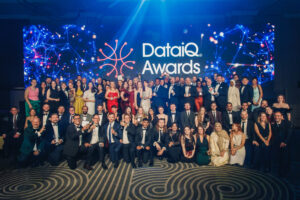Based on candid insights from the DataIQ 100 2025 across North America and Europe, this article explores the subtle but important differences in how sponsorship is earned and sustained in each region. The goal is to help senior leaders refine their approaches by observing what works in various environments, particularly when navigating global teams or building influence across borders.
The language of buy-in: commercial versus contextual
North American leaders often start with a strong commercial frame. Sponsorship is earned by showing how data and AI drive growth, productivity and margin.
Echoing this, Sujatha Krishnan, Head of Data Solutions (Analytics, Insights and Data Science) at LG Electronics USA, advises: “First, I align the data strategy with business priorities, such as revenue growth, customer retention, and operational efficiency. By directly linking data initiatives to these goals, I ensure leadership understands the business impact of data-driven decision-making.”
European leaders, while equally focused on outcomes, often frame sponsorship through organisational alignment, stakeholder trust, and shared context. Their first moves tend to focus on listening, surfacing problems, co-designing relevant solutions, and integration. Therefore, the distinction is about emphasis. Commercial velocity might open the door in some environments, while contextual fluency will sustain it in others.
Illustrating the European framing, Mateus Morato Fantini, President – IIRIS (Customer Data, AI and Analytics platform) at Informa PLC, explains: “Our approach is rooted in co-creation… This collaborative model not only ensures alignment but also fosters innovation and a shared sense of ownership for the success of our joint initiatives.”
Sophie Holland, Director of Data and Business Platforms at Chambers and Partners, adds: “Build trust with the ELT and ask how you can serve them with the data assets. Once they know that you’re helping them look good and that your work directly delivers value to the company, they’ll root for you, push your agenda, and help you to get more funding to grow the team and the estate.”
Underlying the importance of collaboration, Sri Kanisapakkam, CDO at Nationwide Building Society, states: “I focus on building strong, collaborative relationships with key business stakeholders… I push for a partnership approach, where business counterparts are involved in planning and executing data initiatives. This creates a sense of ownership and accountability, leading to stronger support and commitment.”
Executive support: top-down versus side-by-side
Across both regions, executive sponsorship is essential. What differs is how it is secured.
Many North American leaders describe executive backing as a top-down mandate. Vikram Sharma, Director of Engineering Data and AI Platform at Lenovo USA, recommends: “Identify senior leaders who benefit most from data insights. Engaging the right executive ensures that the data function has the right sponsors to champion its value across the organisation.”
Dr Tarun Sood, CDAO at American Century Investments, shares a similar view: “I work closely with senior leadership… This alignment positions data projects as essential for achieving business objectives, leading to robust executive support.”
European leaders more frequently describe sponsorship as a networked outcome. It is earned through side-by-side engagement, lateral collaboration, and building coalitions of influence.
Underscoring this approach, Susie Moan, CDO at Currys, states: “It’s important to foster the right two-way relationships across the business to understand each other’s goals and be clear on the outcomes you’re seeking – and, importantly, to communicate regularly.”
Maria Vounou, Director – Data Science at Burberry, focuses on fostering an organisational-wide data-driven culture by “building strong relationships with senior leaders and stakeholders who can champion the data team” and collaborating “to implement data-driven initiatives…”
Embedding for influence: pods versus partnerships
Both regions recognise that embedding the data function in the business is key. But again, the method diverges.
In North America, many leaders favour agile-style ‘pods’: small, co-located teams that move quickly, deliver fast, and iterate often. Sponsorship is sustained by being constantly close to the action.
Kunal Das, SVP, Chief Data and Analytics Officer at Advance Auto Parts, advises: “Bring the business along in the overall agile journey of building a product through multiple iterations. Avoid waterfall surprises. Start with a POC, let the business see the value, and collectively build a business case to procure funding. Once approved, follow a product model to build, test, learn and iterate.”
Recommending a co-location structure, Ryan Swann, CDAO at Vanguard, explains: “Data/AI organisations typically are somewhere between siloed ->federated-> centralised. The key here is keeping the connective tissue with the business while maturing the data ecosystem horizontally to scale outcomes. This could look like co-location between data and business teams, giving the business full budget control to prioritise ‘the what’ in varied organisation structures.”
European leaders are more likely to embed through partnership and governance. They focus more on shared accountability and shaping decisions.
Abhishek Khandelwa, CAO at Barclays UK, notes: “I prioritise building and maintaining close relationships with senior stakeholders, ensuring that the value of data initiatives is communicated in their outcomes—But it needs to work both ways; I keep them accountable on how they use the insights I equip them with.”
Along the same lines, Ram Kumar, CDAO at Cigna Health Care International, describes a rigorous approach: “We spent a significant amount of time prioritising the use cases by working closely with the stakeholders, partners and including the CEOs. We have a comprehensive business use case prioritisation and value creation framework with over 25 filters that we apply to prioritise. The monetary value agreed for a use case is baked into the P&L of CEOs to ensure operationalisation accountability.”
Framing the value: ROI versus relevance
When discussing how they demonstrate impact, North American leaders frequently start with business metrics: financial outcomes, operational uplift, and cost avoidance.
Saba Beyene, VP of Customer Intelligence at American Airlines, puts it simply: “Data needs to be tied to quantifiable business value with clearly defined metrics and tracking.”
Agreeing with this framing, Meet Patel, Global Senior Director, Advanced Analytics – Strategy, Capabilities, and Culture at Kellanova, recommends: “Regularly communicate
the value and impact of data projects through metrics, case studies, and success stories to highlight tangible business outcomes and strengthen sponsorship.”
European leaders, while not ignoring ROI, often begin with strategic relevance. They aim to show how data helps broader organisational goals, enabling mission-critical priorities.
Carole Roberts, Director of Data at Leeds Building Society, highlights: “Everyone is busy, everyone has a set of priorities to deliver – working in a purposeful organisation means those individual priorities converge to drive our overall purpose and being able to explain data and AI in the context of those priorities drives a real difference.”
Placing organisational relevance as a core strategy, Martin Novak, Data Director at Allwyn UK, shares: “We maintain transparency and alignment with Allwyn UK’s ultimate goal: doubling the money raised for good causes over the ten-year National Lottery license. This purpose underpins our roadmap, priorities, and initiatives.”
For Caroline Bellamy, Chief Data Officer and Deputy CIO at the Ministry of Defence UK, relevance is also about strategic clarity: “Key for senior sponsorship is relevance and focus on outcomes. I forge partnerships and networks to ensure we are focused on the right priorities. Alongside focusing on user priorities and outcomes, we have to maintain the rigour and integrity of our profession and the strength of our voice as we compete for investment and resourcing.”
Communication styles: visibility versus credibility
Communication is essential on both sides, but styles differ. North American data and AI leaders lean into visibility as a tool for influence.
Aravind (Jag) Jagannathan, Single Family Vice President and Chief Data Officer at Freddie Mac, notes: “Regular communications through executive briefings, success stories, and measurable outcomes help maintain visibility and support.”
Advocating for storytelling, Victoria Gamerman, Global Head of Digital Transformation at Boehringer Ingelheim, stresses: “We must be able to tell a story with the data – we need expertise in telling a story to confirm or pivot a business decision, moving beyond throwing data at users and having them connect the dots (or worse, take out a calculator!).”
In Europe, credibility is the guiding principle. For Marco Hoppenbrouwer, Chief Data Officer Global Functions, IRM and IDT at Shell, having a strong governance structure is key for credibility: “We embedded the data organisation within existing business processes. I assigned data responsibilities within these processes, making data management a natural part of daily operations and governance forums. This integration improved data quality and facilitated a sustainable transition to a data-driven organisation.”
Al Mathie, CDO at NFU Mutual, advocates for the track record and business stakeholders to speak for the data function: “It’s all about regular and focused updates to our executive committee and demonstrating a delivery track record… The more I can get others to tell the story of what we’re doing and how it helps them, the easier the sponsorship becomes.”

One destination, two routes
Despite these regional nuances, what unites North American and European data and AI leaders is a deep understanding that sponsorship is built. Whether the starting point is visibility or trust, ROI or relevance, pods or partnerships, what matters most is reading the context and adapting accordingly.
In a world where influence is contextual, understanding the distinct approaches to secure sustained sponsorship can help data and AI leaders go further and faster.
Coming next
This article is part of a new series based on insights from the DataIQ 100: the most influential data and AI leaders across Europe and North America. In our next article, we will explore how the DataIQ 100 establish personal authority: the trust, visibility, and credibility that earn them a seat at the table and sustain business sponsorship.
Join the DataIQ 100 – and stand alongside the industry’s most influential voices.
If you’re leading change in data and AI, it’s time to make it visible. The DataIQ 100 is the first and only fully curated power list of the most influential data and AI leaders who are shaping strategy, culture, and impact across Europe and North America.
Apply now to be considered for the DataIQ 100 2026 and share your story and impact with the leaders defining what excellence looks like. Ready to lead the conversation? Register your details here.
Join the premier gathering for data and AI leaders at the DataIQ World Congress, 4–5 November.
This is where the real conversations happen with people who are making the difference. Find yourself among peers who are shaping strategy, influencing investment, and delivering outcomes driven by data and AI. Celebrate the best at the DataIQ Awards and contribute to the collective momentum of data leadership. Get your World Congress tickets now.





